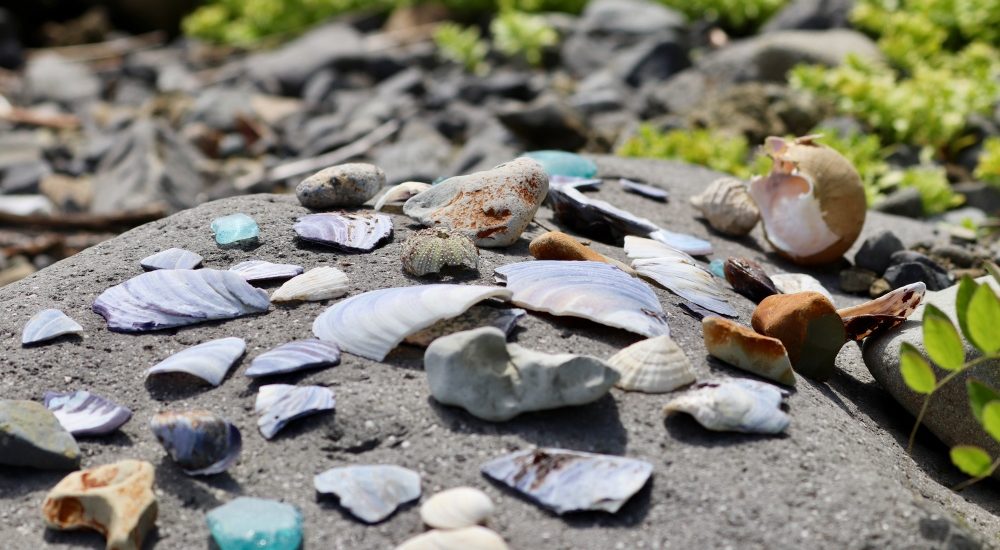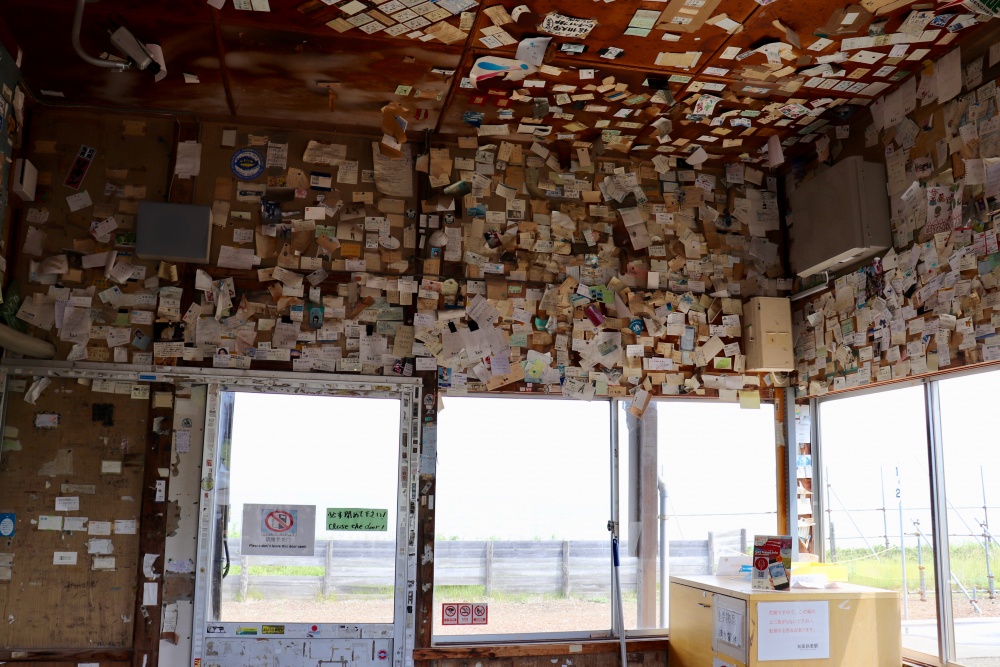
Sadly, we had to say sayonara to the beautiful Auberge Kita No Dan Dan hotel this morning for the drive east to the town of Shari. Coastal route 244 took us to Kitahama Station, the train station closest to the drift ice that comes from Russia across the Sea of Okhotsk in the winter. The small, unmanned station felt like the little station in ‘Station Agent,’ only further back in time and next to a sea. We nodded to the elderly man waiting for his train inside and swiveled our heads around looking at all the international writings and business cards affixed to the walls and ceiling.
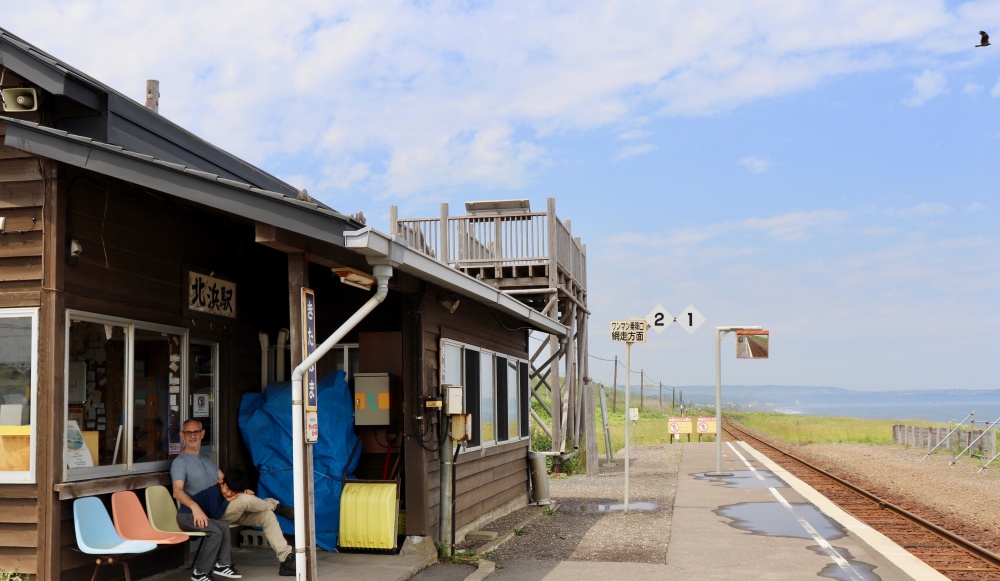
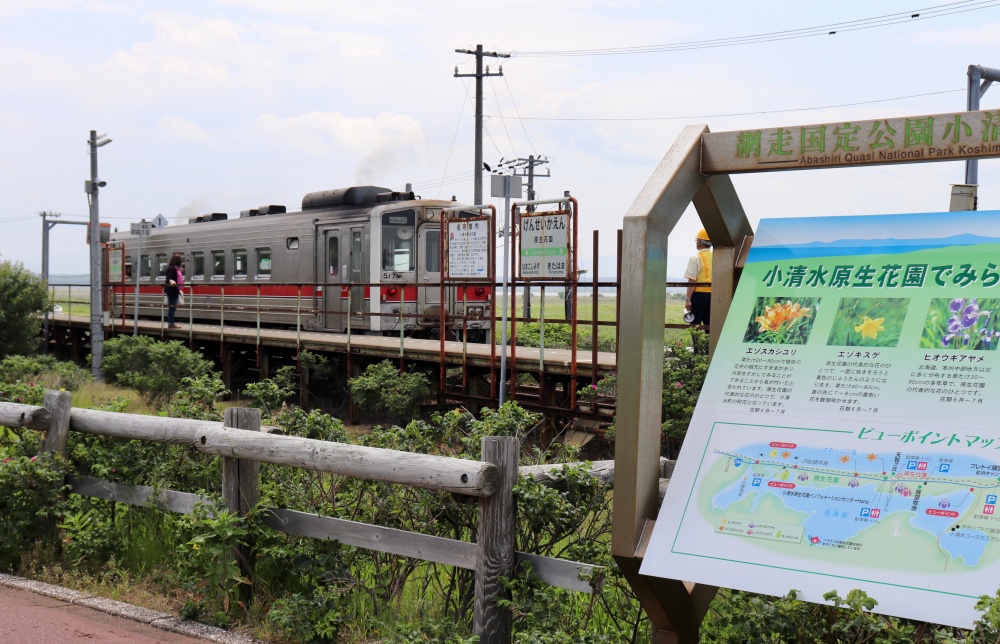
A few minutes later the coastal route brought us to the stunning Koshimizu Genseikaen wildflower preserve, part of the Abashiri National Park. Grasses and wildflowers (lots of lilies when we visited) grow on a sand dune next to the Genseikaen train station. It’s always fun watching an old-fashioned train pull into a station alongside the water.
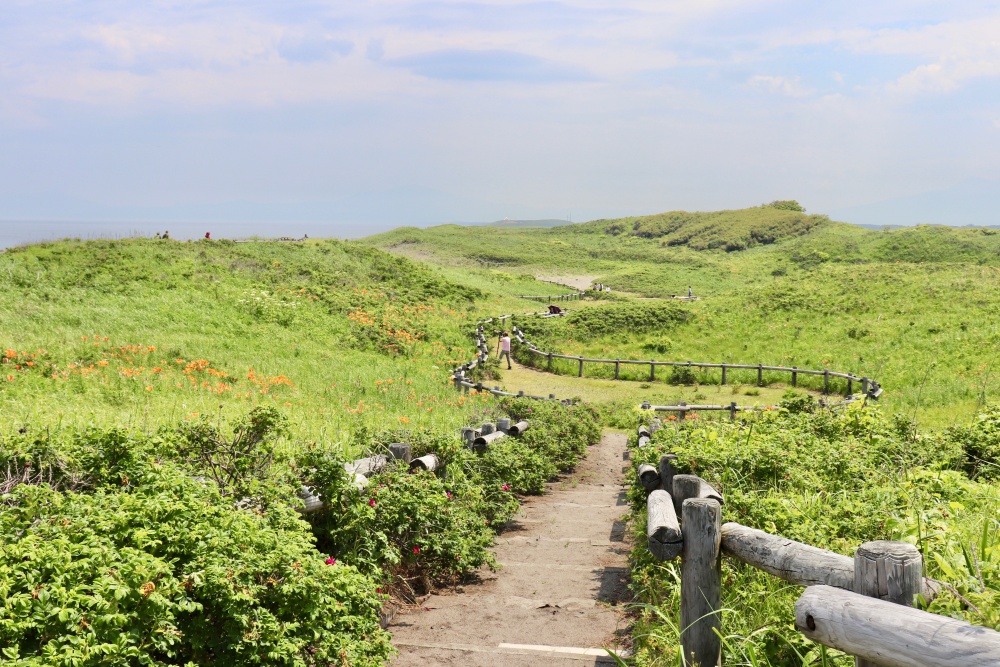
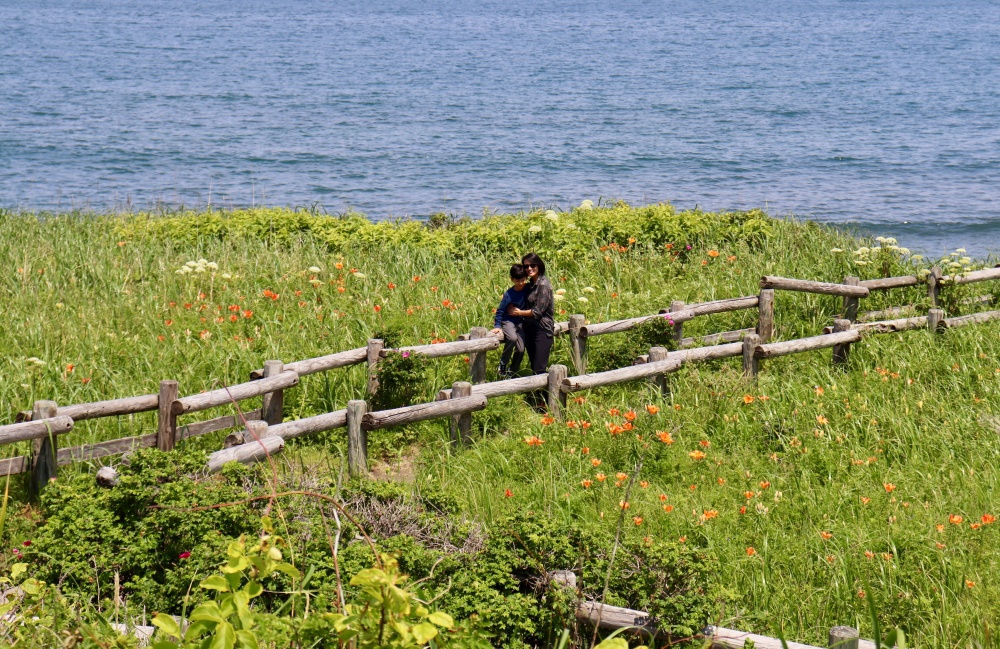
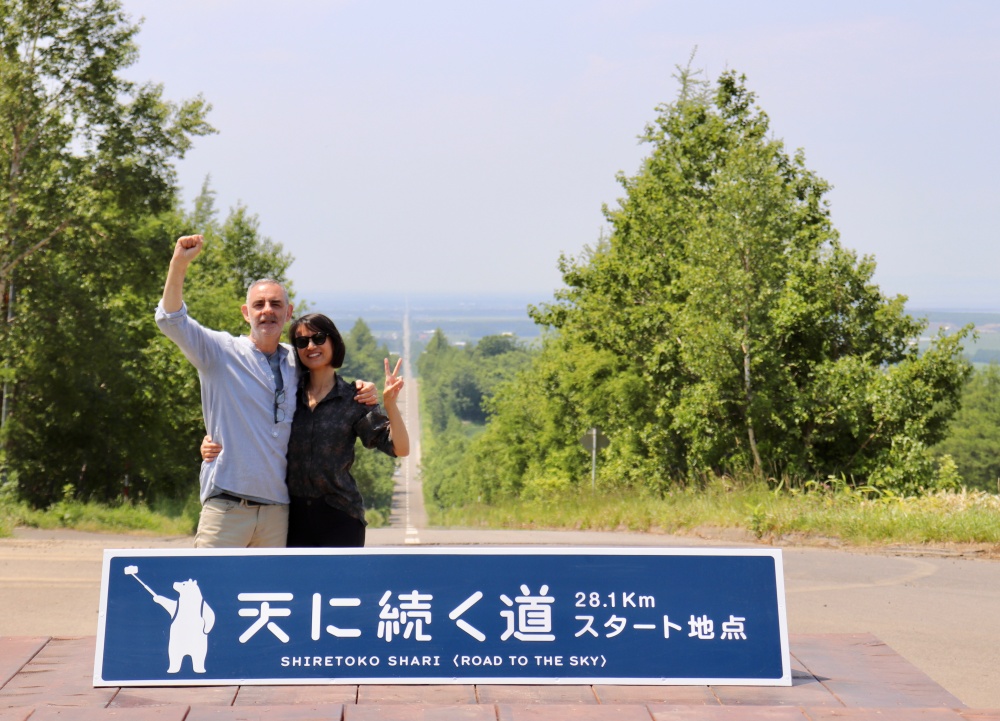 Although we would have loved to run around this sand dune a bit longer we had to make it to the docks by 1PM for our cruise to Cape Shiretoko, also known by the indigenous Ainu tribe as the “end of the world,” due to its location at the tip of the most northeastern peninsula of Hokkaido. The Shiretoko peninsula is one of the wildest and most remote areas in Japan, so much so that there are no roads that lead to the tip. A three hour boat ride it would have to be. First, we made a quick detour to ‘Road to the Sky,’ a straight 28km shot of pavement that seemingly goes up to the sky. Can you believe there were no other cars on this stretch of road?!?
Although we would have loved to run around this sand dune a bit longer we had to make it to the docks by 1PM for our cruise to Cape Shiretoko, also known by the indigenous Ainu tribe as the “end of the world,” due to its location at the tip of the most northeastern peninsula of Hokkaido. The Shiretoko peninsula is one of the wildest and most remote areas in Japan, so much so that there are no roads that lead to the tip. A three hour boat ride it would have to be. First, we made a quick detour to ‘Road to the Sky,’ a straight 28km shot of pavement that seemingly goes up to the sky. Can you believe there were no other cars on this stretch of road?!?
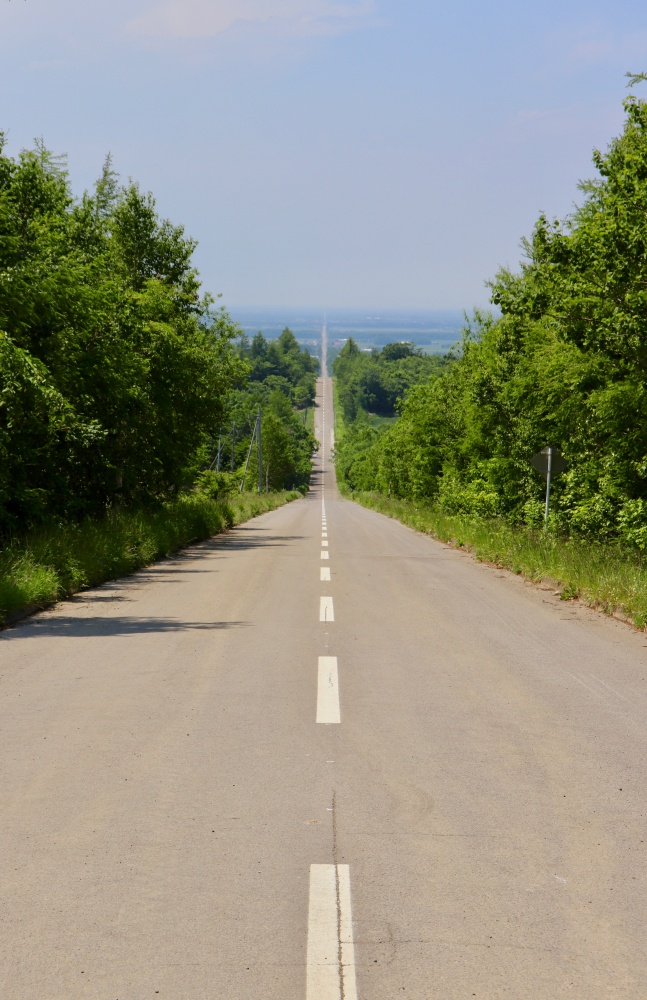
As we approached the entrance to the Shiretoko National Park we were welcomed by the Oshinkoshin Waterfall, a wide waterfall cut down the middle by a large rock. What a good omen of beautiful things to come….
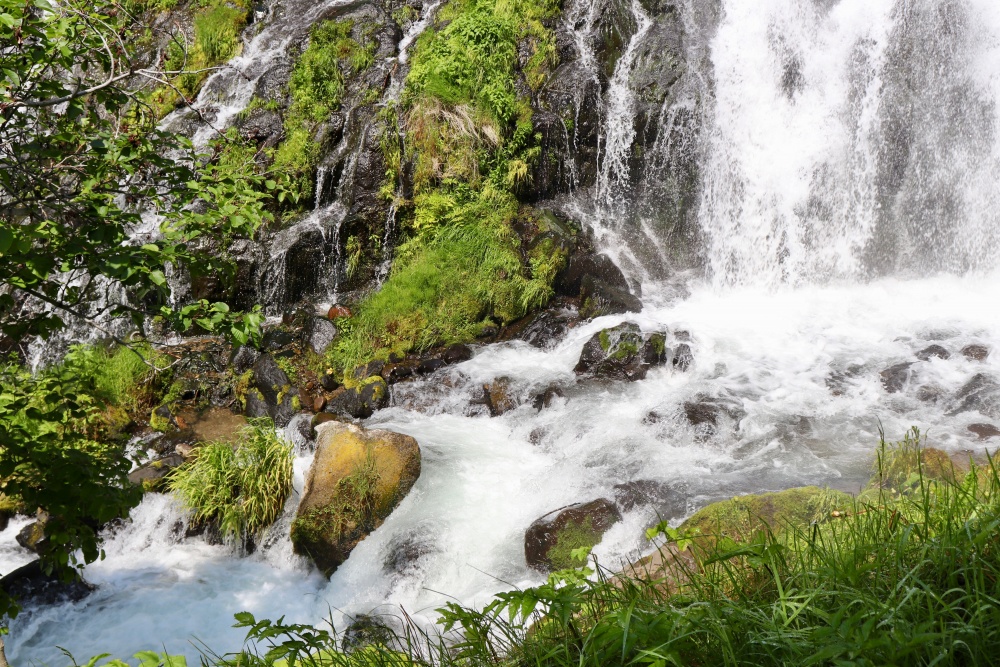
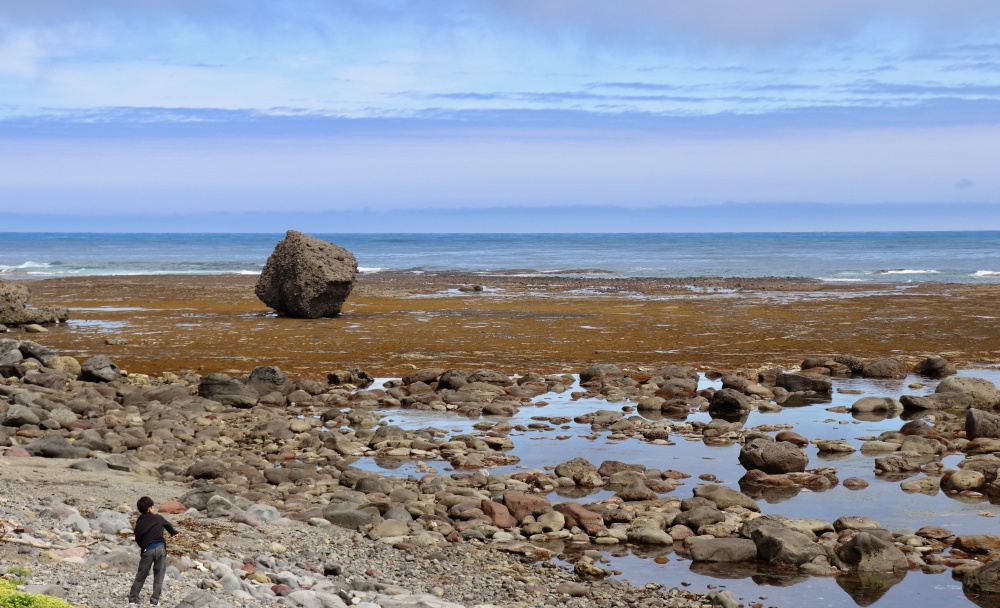 We checked into Iruka (‘dolphin’ in Japanese) Hotel, a lovely and cozy place that we would call home for the next three nights with an amazing view of the sea. Growing up picking mussels off rocks in Long Island and spending way too much time on the beaches of Palos Verdes my heart felt joyful letting Jules loose in the mornings to throw rocks into the water, make tide pool discoveries and build up his beach treasure collection.
We checked into Iruka (‘dolphin’ in Japanese) Hotel, a lovely and cozy place that we would call home for the next three nights with an amazing view of the sea. Growing up picking mussels off rocks in Long Island and spending way too much time on the beaches of Palos Verdes my heart felt joyful letting Jules loose in the mornings to throw rocks into the water, make tide pool discoveries and build up his beach treasure collection.
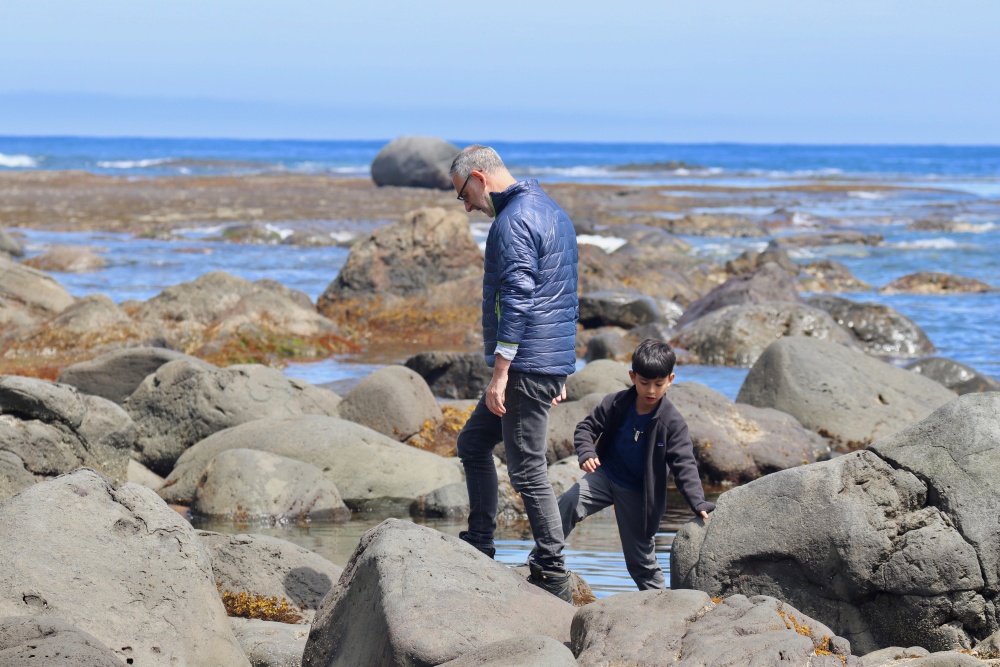
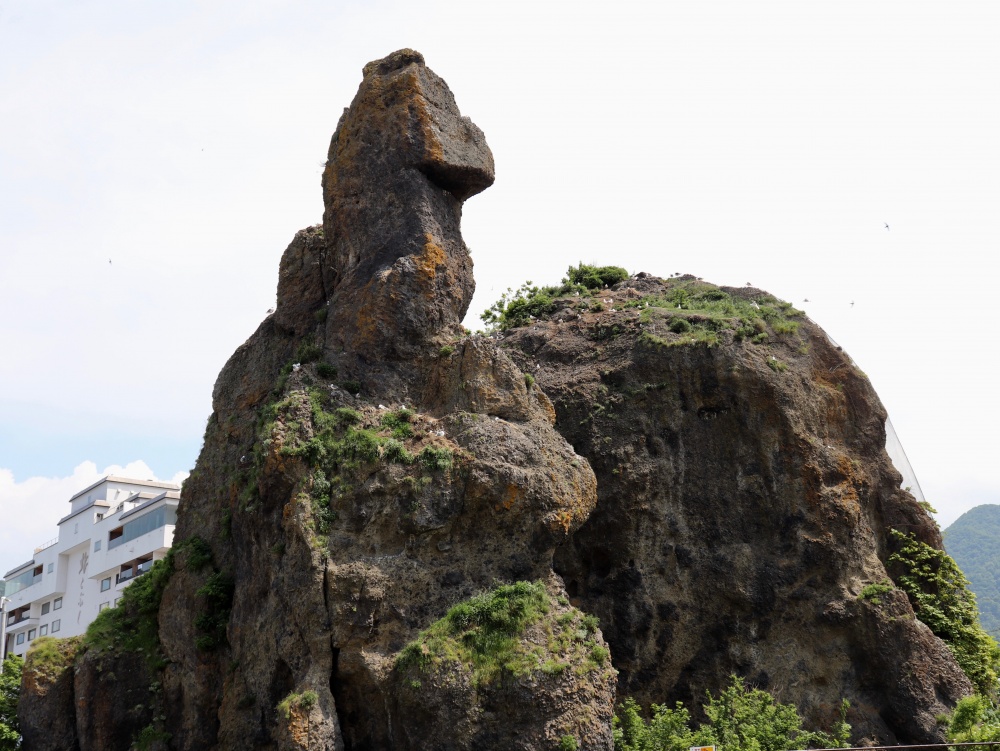
We found ‘Godzilla Rock’ and made our way across the street to Cafe Fox, which operates as a restaurant, cruise service, bar and nightclub (called ‘Club Ice’ at night) to get onto the boat which would give us views of Shiretoko we couldn’t see otherwise and to hopefully spot the Hokkaido brown bear which lives up in these parts. We quickly learned that weather in Shiretoko can change in an instant. The relatively sunny sky at the port became overcast halfway up the peninsula, thick with fog and clouds before the rain came down. Despite this, we spotted a beautiful brown bear walking along the beach, sika deer grazing on the hill and lovely birds such as pelagic cormorants and shearwaters. I was kicking myself for forgetting my camera lens hood on this rainy day, but I saw another passenger use a quick hack of wrapping a hand towel around the front of his lens. Voila, problem solved!
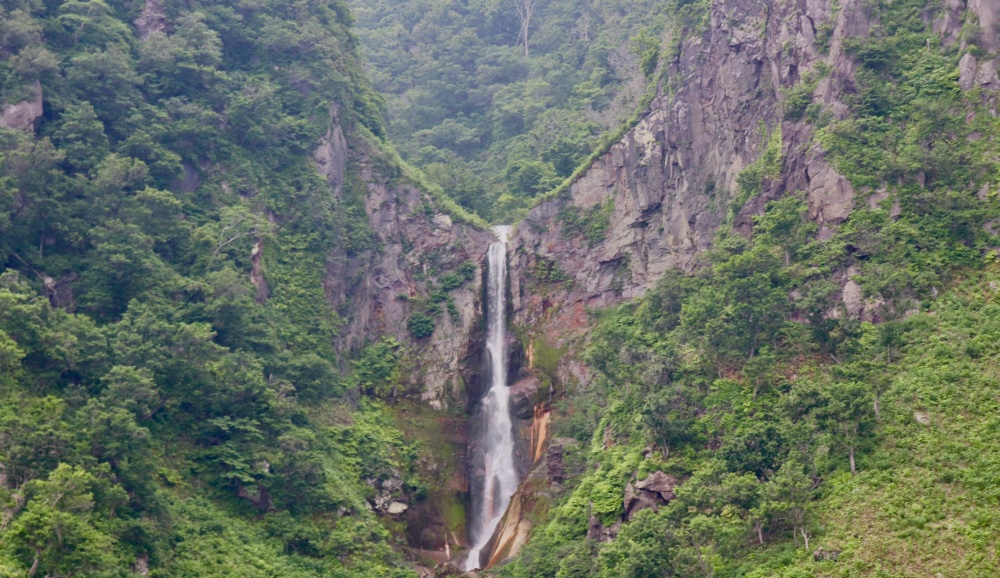
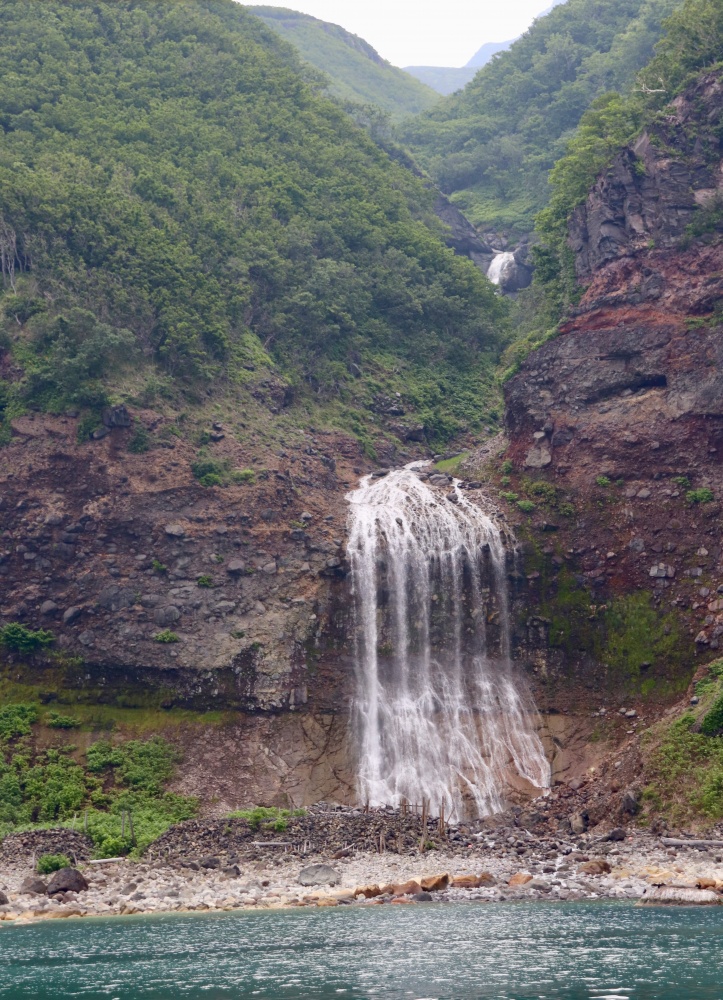
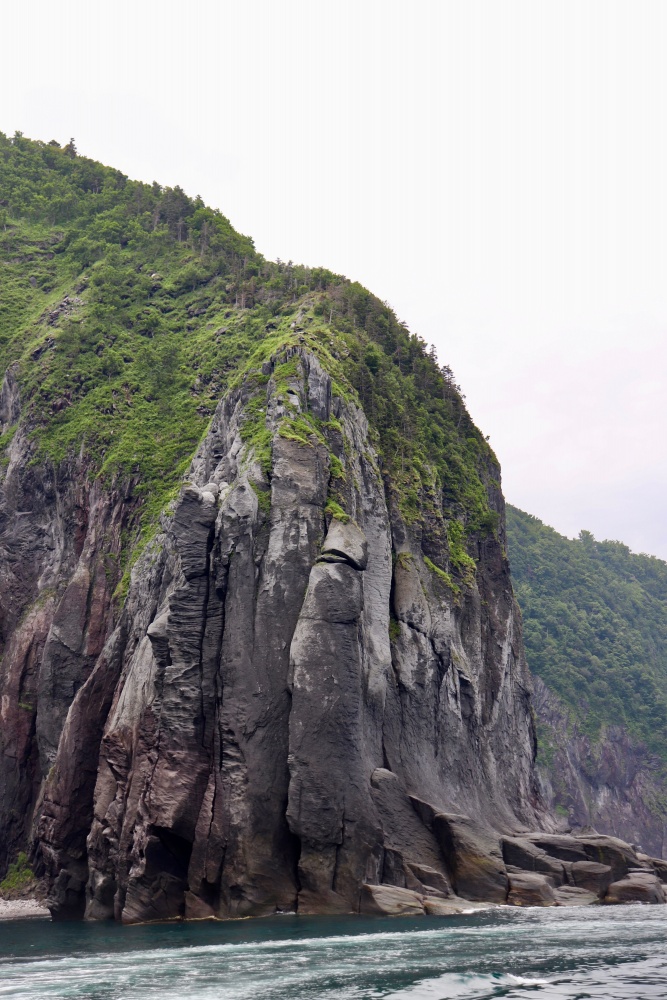
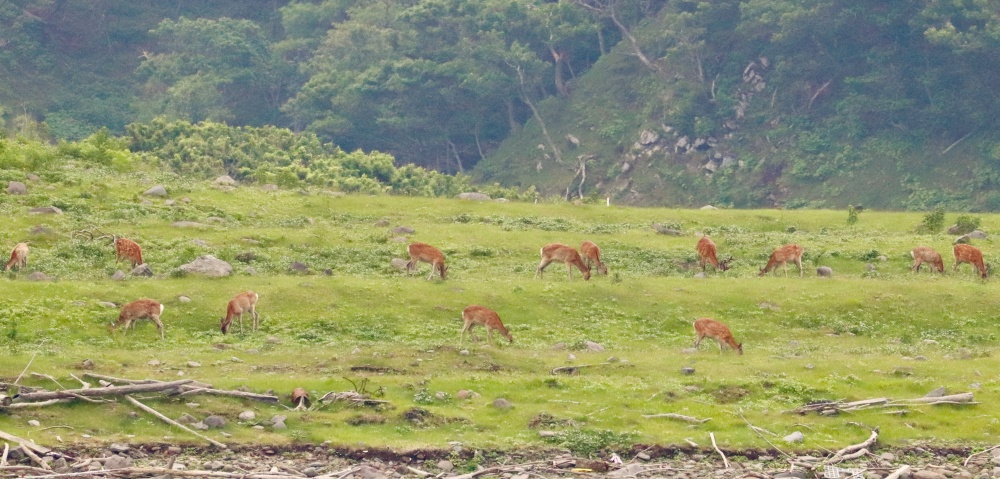
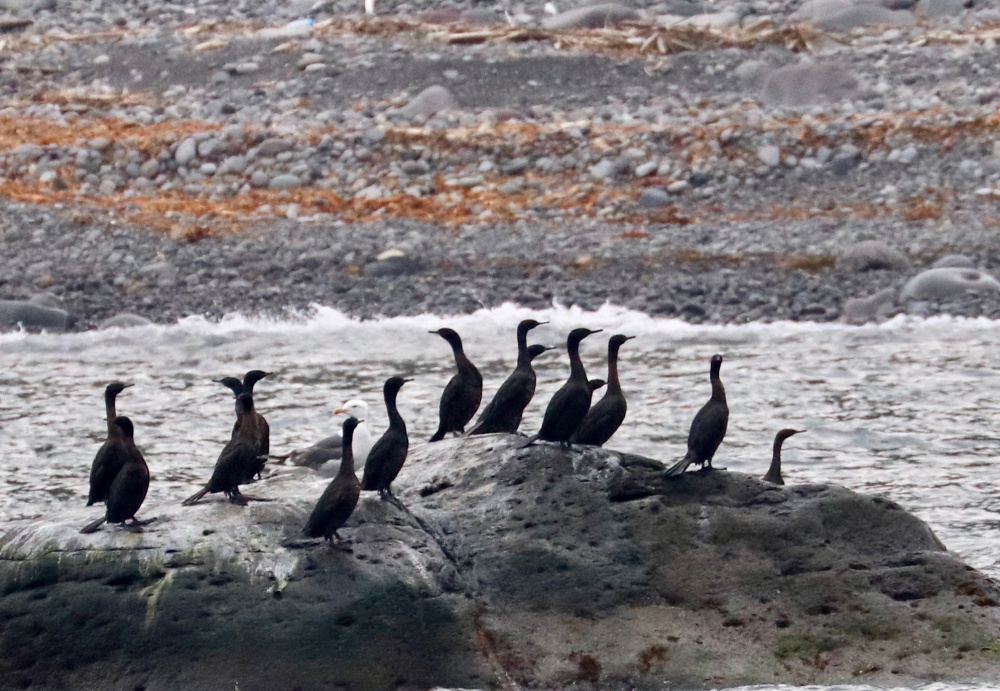
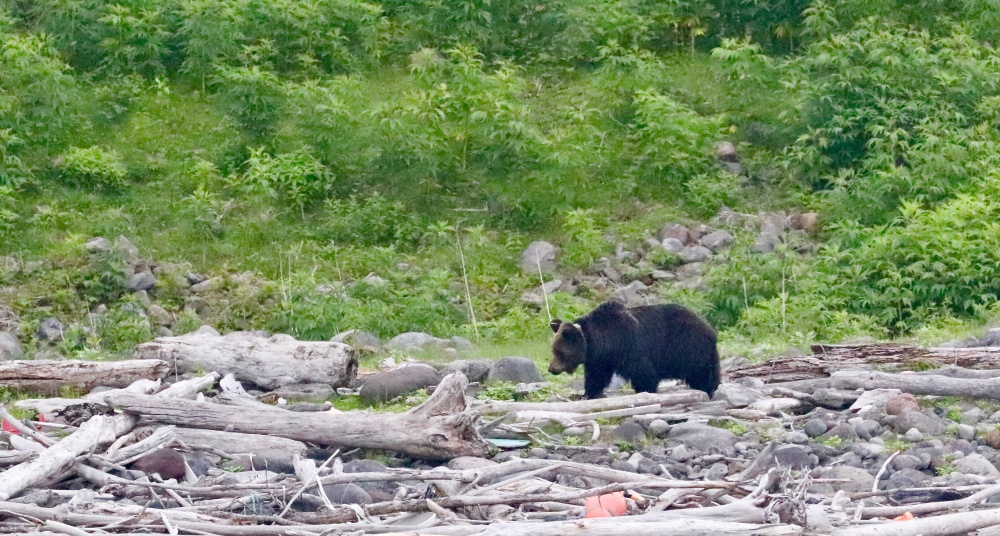
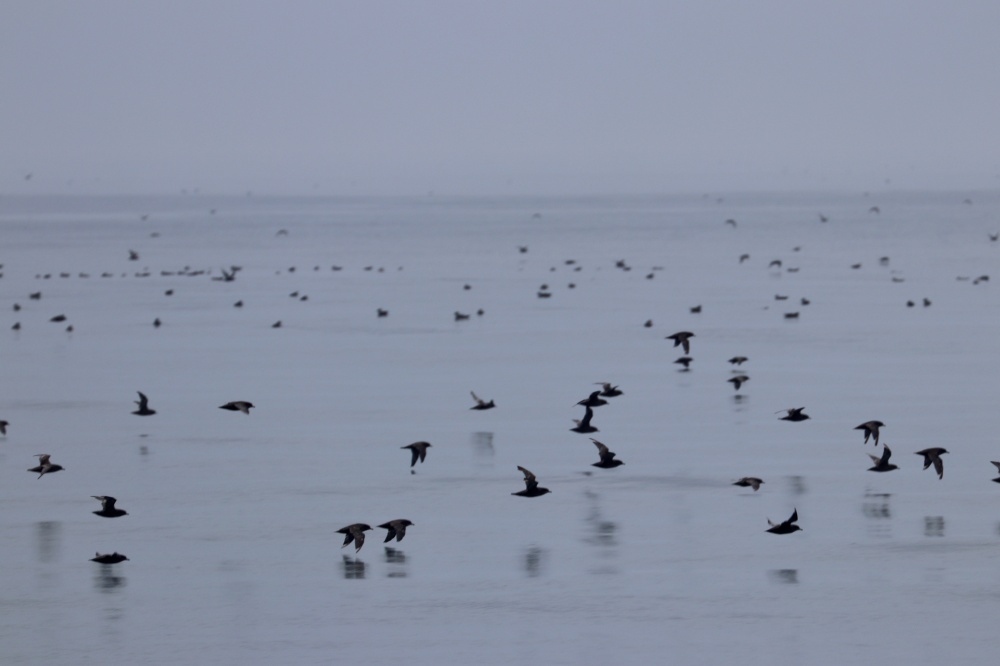

Ultimately, we didn’t make it all the way to Cape Shiretoko, the tip of the peninsula, due to the winds and limited visibility. From everything we had seen, though, I can’t say any of us was disappointed. Unbelievably, the situation kept getting better where we actually received a partial refund, because they couldn’t take us all the way to the Cape. And since Cafe Fox becomes a bar at night Philip was able to return later to catch the England vs. Panama World Cup game with the locals who didn’t speak English but would cheer ‘Harry Kane’ and pat Philip on the back whenever England scored a goal. World travel is pretty awesome.
